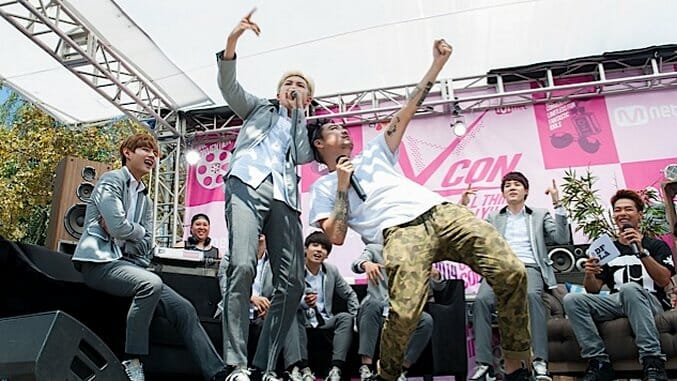BTS and the Shunning of Asian Pop Stars in America
The K-pop record-breakers can't get a foothold in the U.S. Do they even want to?

On May 21, viewers around the world watched with mostly disbelief as Justin Bieber, Ariana Grande, Selena Gomez and Shawn Mendes had to concede the Top Social Artist award at the 2017 Billboard Music Awards to BTS, the winners in a landslide. The South Korean pop group garnered more than 313 million votes—75 percent of the total tally—to halt a six-year winning streak by Bieber, who got 23 million votes this time around.
The reaction—”Who are these Asians?”—swiftly ballooned on social media.
kpop is still irrelevant, nobody in te states is gonna listen to a korean song just because bts won an award https://t.co/xTtKRVlGXK
— leo (@roIIingdice) May 22, 2017
how did these asians wearing makeup beat ACTUAL FAMOUS PEOPLE
— kaley (@bieberzmahone) May 22, 2017
Buzzfeed reported that another (now deleted) tweet read, “Not trying to be racist, but you don’t see any American singer or band participating in a Korean award show so, like, BTS please just go back to Korea.”
Of course, the two Canadian nominees in the category (Bieber and Mendes) have eluded this knee-jerk outrage and xenophobia, as has just about every Brit in American pop history from the Beatles to One Direction. It’s the type of blowback that ensues whenever a person of color upsets the cultural status quo—as when Barack Obama first ran for the presidency, when Jeremy Lin first played for the Knicks, or when Takuma Sato won this year’s Indianapolis 500 and prompted the now-fired Denver Post sports writer Terry Frei to tweet how that made him “uncomfortable.” Indeed, the American soundscape has proven to be a final frontier for Asians and Asian-Americans to find their footing.
Far from an overnight sensation, BTS have earned success that even ardent K-pop fans couldn’t have fathomed when the group debuted in 2013. Steadily amassing a following on both sides of the Pacific, the septet first earned Stateside exposure at the 2014 KCON in Los Angeles. Last October, their third album, “Wings,” moved 16,000 units in the U.S. in its first week of release and entered the Billboard 200 at No. 26—the highest chart position ever for a K-pop album. This spring, they sold out several American arenas on their The Wings tour. But despite their meteoric rise and Billboard Awards win, BTS has received virtually zero airplay and very little press in the U.S.
“How did these asians wearing makeup beat ACTUAL FAMOUS PEOPLE?,” wrote one outraged fan on Twitter.
Angela Killoren, chief operating officer at the American branch of Korean entertainment and marketing empire CJ E&M, said K-pop suffers the stigma of pop music in general. “It’s this cultural sense of superiority, you know, the true musician versus the pop artist,” Killoren said. “Music critics probably are begrudgingly covering Taylor Swift to begin with. It’s about authenticity in our industry. For them to cover pop music from another culture, I think it’s just a bridge too far.”
-

-

-

-

-

-

-

-

-

-

-

-

-

-

-

-

-

-

-

-

-

-

-

-

-

-

-

-

-

-

-

-

-

-

-

-

-

-

-

-









































